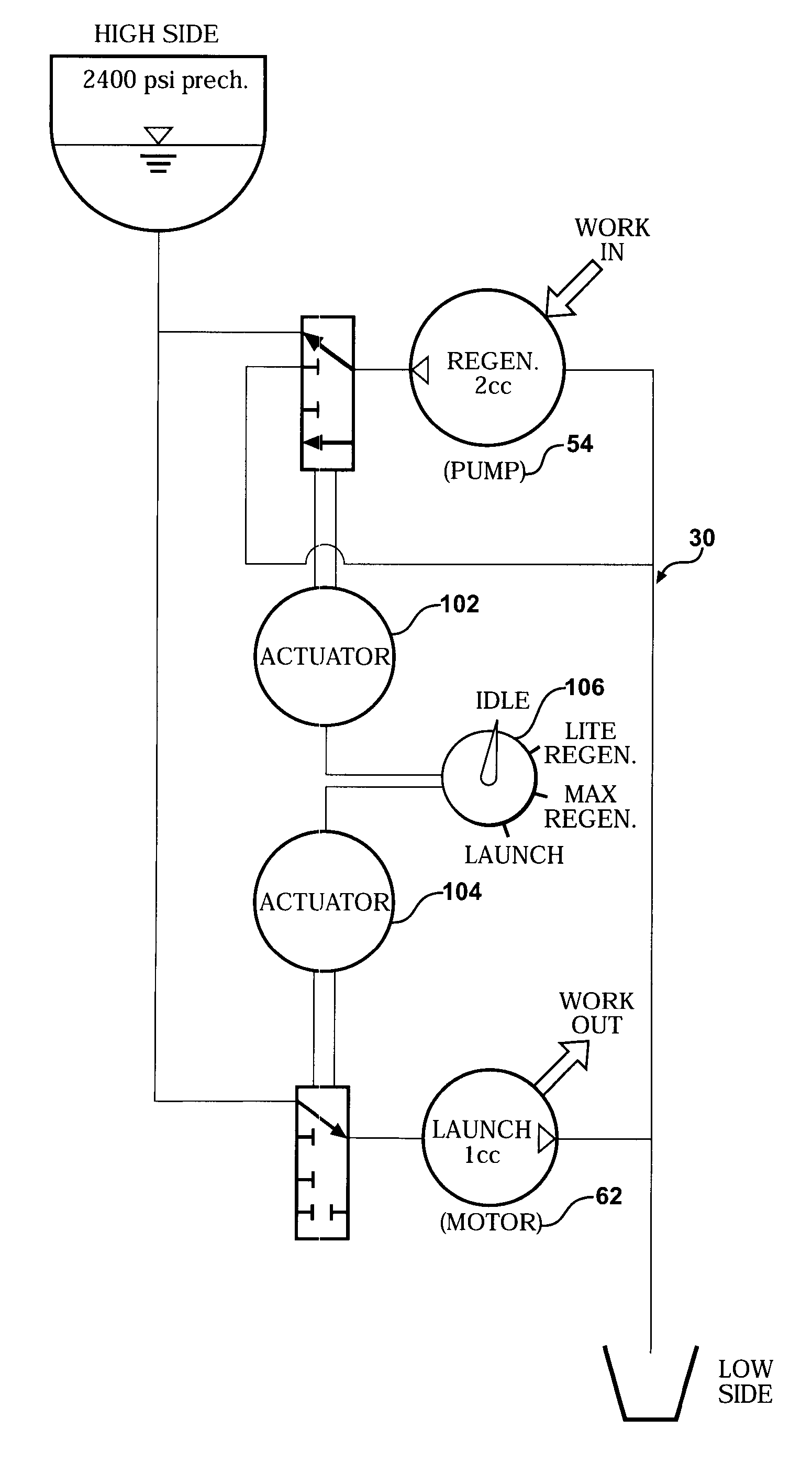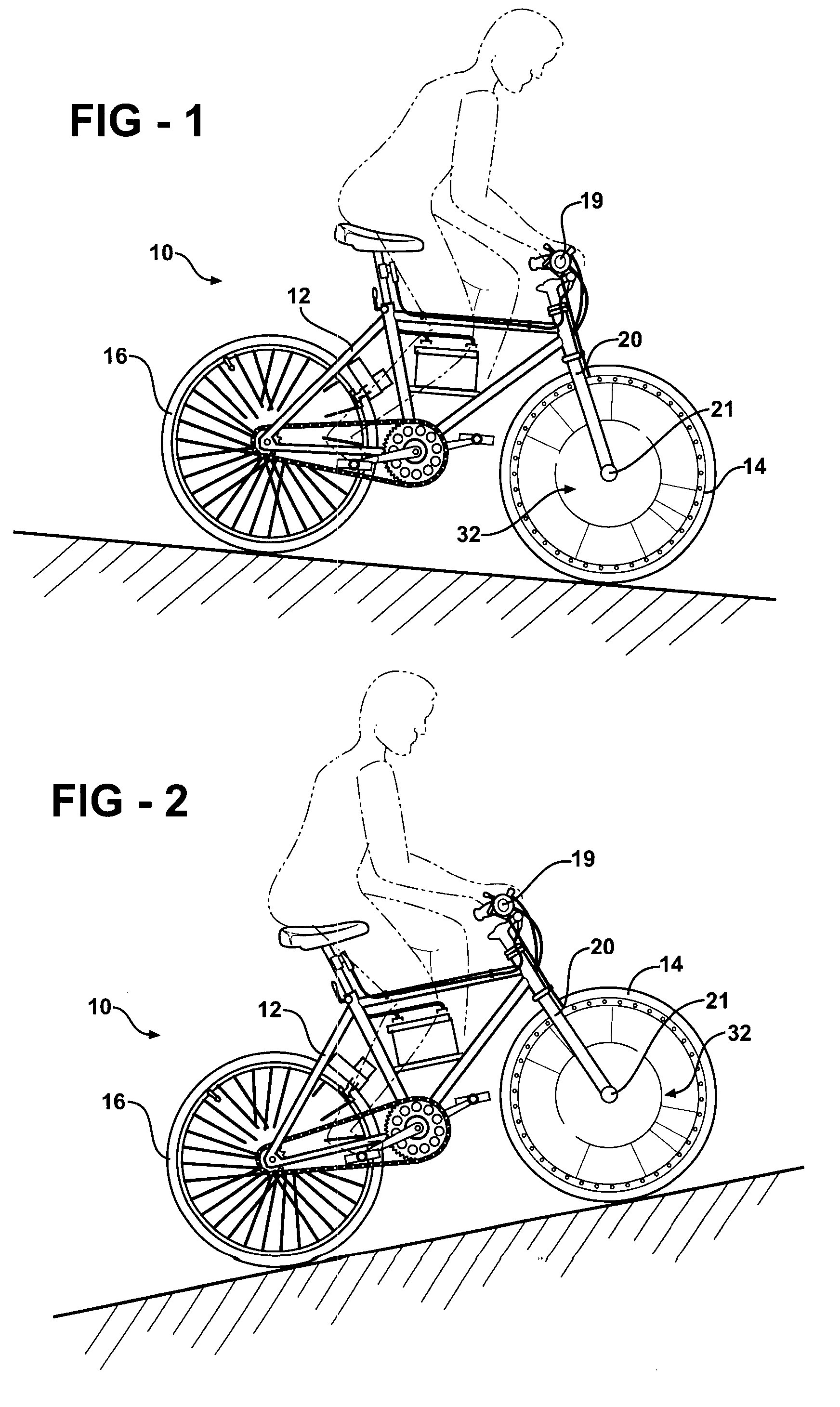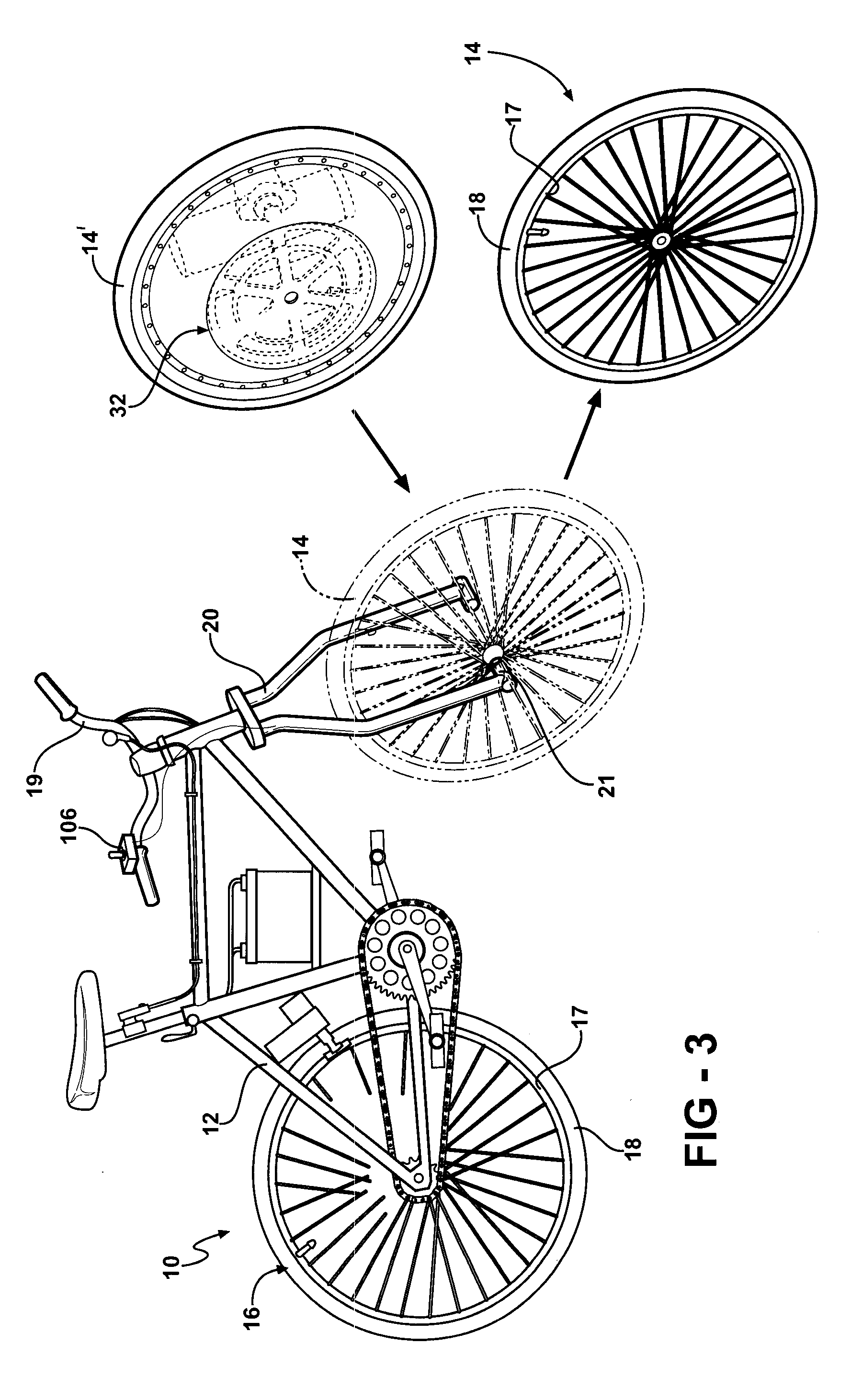Hydraulic regenerative braking for a vehicle
a technology of hydraulic regenerative braking and vehicle, which is applied in the direction of braking system, cycle brake, cycle equipment, etc., can solve the problems of wasting valuable kinetic energy, requiring heavy duty batteries, and limiting the longetivity and feasibility of these vehicles, so as to minimize the frontal weight of the bicycle and improve the compactness of the bicycl
- Summary
- Abstract
- Description
- Claims
- Application Information
AI Technical Summary
Benefits of technology
Problems solved by technology
Method used
Image
Examples
Embodiment Construction
[0041] The present invention relates a regenerative braking device or system which allows a vehicle, such as, for example, a bicycle, to recapture part of the kinetic energy that would otherwise be lost when braking and make use of that energy released to assist take-off and hill climb maneuvers. The present invention is applicable to automobiles and other vehicles with the bicycle used for exemplary purposes without limiting the scope of the present invention.
[0042] Referring to the Figures, wherein like numerals indicate like or corresponding parts throughout the several views, a bicycle is generally shown at 10 in FIGS. 1 through 3. The bicycle 10 has a frame 12 rotatably supporting front 14 and rear 16 wheels, with each wheel 14 and 16 having a rim 17 and a tire 18. The front wheel 14 is steerable by way of a handlebar 19 joined to fork tubes 20 holding the axle 21 of the front wheel 14. FIG. 1 illustrates a rider on the bicycle 10 descending a slope, which is merely representa...
PUM
 Login to View More
Login to View More Abstract
Description
Claims
Application Information
 Login to View More
Login to View More - R&D
- Intellectual Property
- Life Sciences
- Materials
- Tech Scout
- Unparalleled Data Quality
- Higher Quality Content
- 60% Fewer Hallucinations
Browse by: Latest US Patents, China's latest patents, Technical Efficacy Thesaurus, Application Domain, Technology Topic, Popular Technical Reports.
© 2025 PatSnap. All rights reserved.Legal|Privacy policy|Modern Slavery Act Transparency Statement|Sitemap|About US| Contact US: help@patsnap.com



